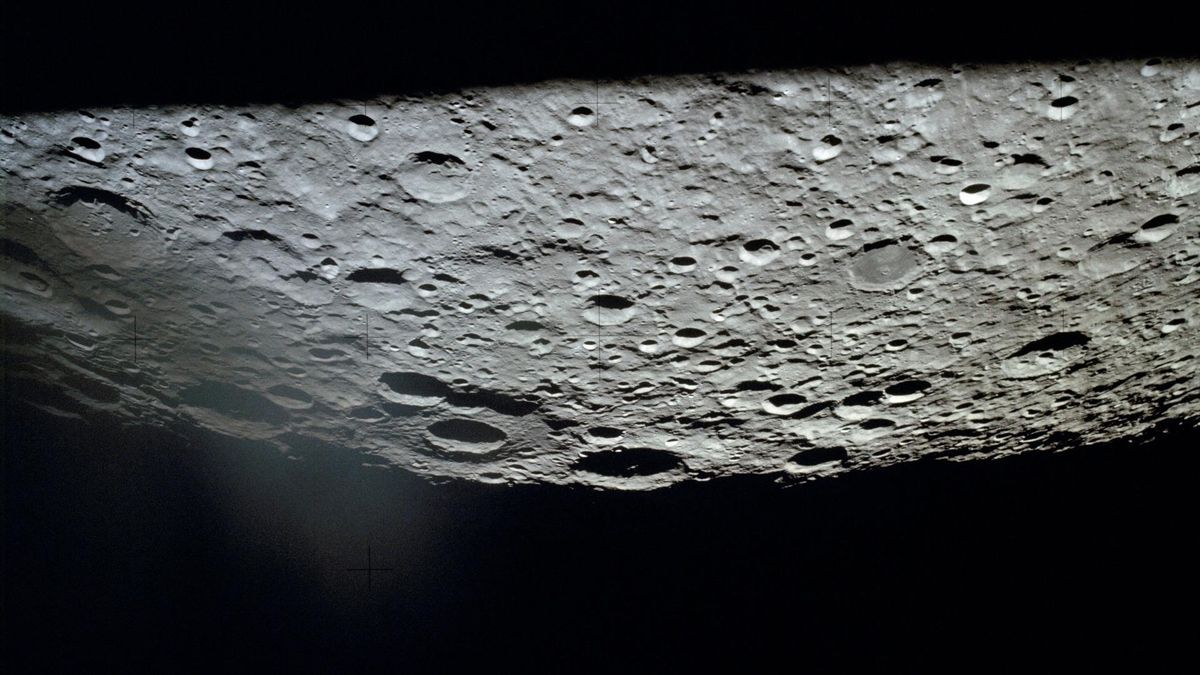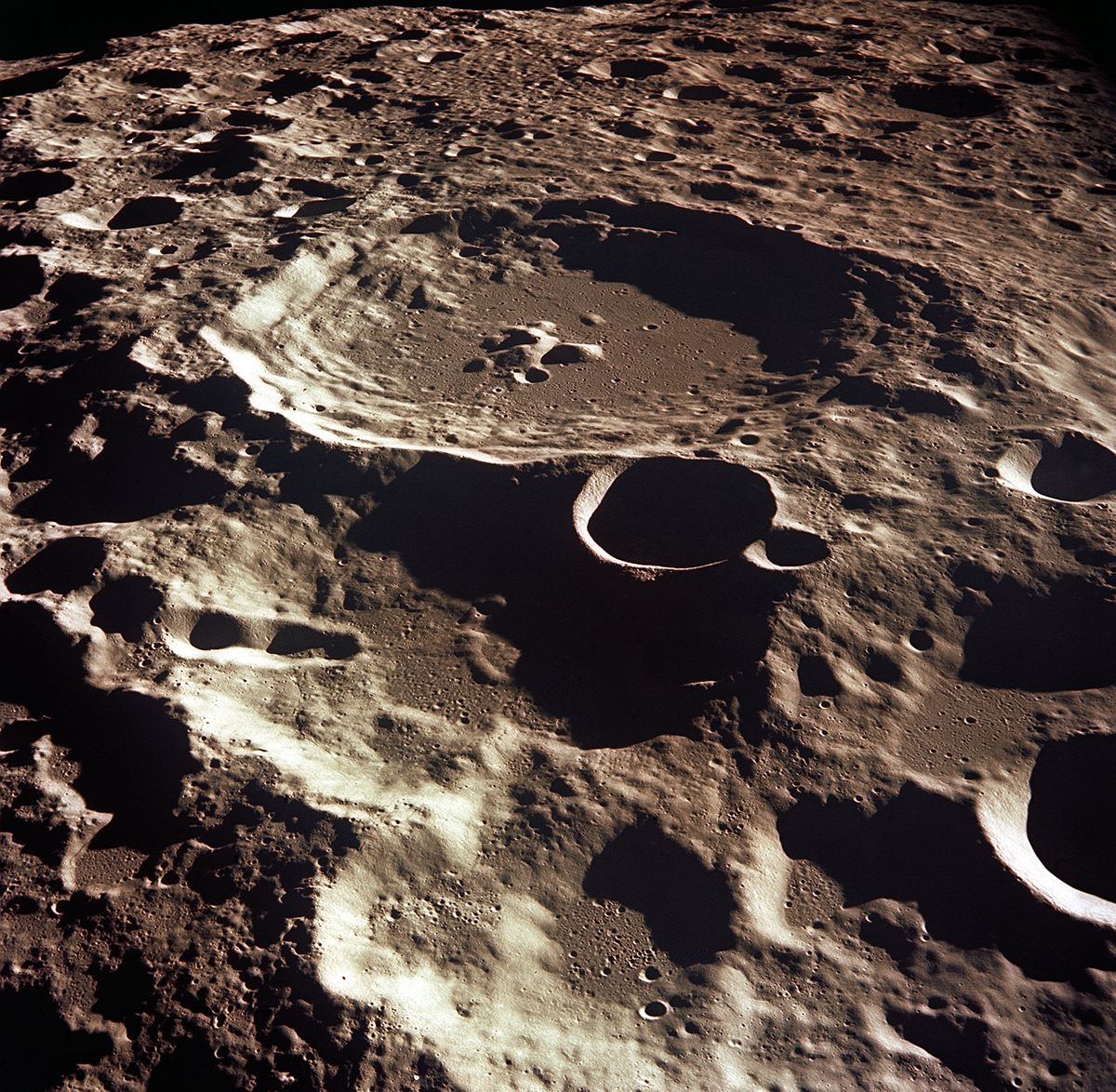China's rover maps 1,000 feet of hidden 'structures' deep below the dark side of the moon
By Isobel Whitcomb published about 11 hours ago
Scientists were able to visualize the upper 1,000 feet of the moon's surface for the first time. Their results reveal billions of years of previously hidden lunar history.

The farside of the moon, photographed by Apollo 13, hands upside-down over the blackness of space
The farside of the moon, as photographed by Apollo 13, hangs upside-down over the blackness of space (Image credit: NASA)
Since it first landed in 2018, China's Chang'e-4 — the first spacecraft to ever land on the far side of the moon — has been taking stunning panoramas of impact craters and sampling minerals from the moon's mantle. Now, the spacecraft has enabled scientists to visualize the layer cake of structures that comprise the upper 1,000 feet (300 meters) of the moon's surface in finer detail than ever before.
Their results, which were published Aug. 7 in the Journal of Geophysical Research: Planets, reveal billions of years of previously hidden lunar history.
A rover that traveled aboard Chang'e-4, named Yutu-2, is equipped with a technology called Lunar Penetrating Radar (LPR). This device enables the rover to send radio signals deep into the moon's surface, said lead study author Jianqing Feng, an astrogeological researcher at the Planetary Science Institute in Tucson, Arizona. "Then, it listens to the echoes dancing back," Feng told Live Science. Scientists can use those "echoes," or radio waves that bounce off of underground structures, to create a map of the lunar subsurface. In 2020, scientists used Yutu-2’s LPR to map the upper 130 feet (40 m) of the moon's surface — but hadn't gone deeper until now.
These new data suggest the top 130 feet of the lunar surface are made up of multiple layers of dust, soil, and broken rocks, Feng said. Hidden within these materials was a crater, formed when a large object slammed into the moon. Feng and his colleagues hypothesized that the rubble surrounding this formation was ejecta — debris from the impact. Farther down, the scientists discovered five distinct layers of lunar lava that seeped across the landscape billions of years ago.

The Crater Daedalus on the lunar farside as seen from the Apollo 11 spacecraft in lunar orbit (Image credit: NASA)
More:
https://www.space.com/china-moon-rover-maps-hidden-structures?utm_source=notification

